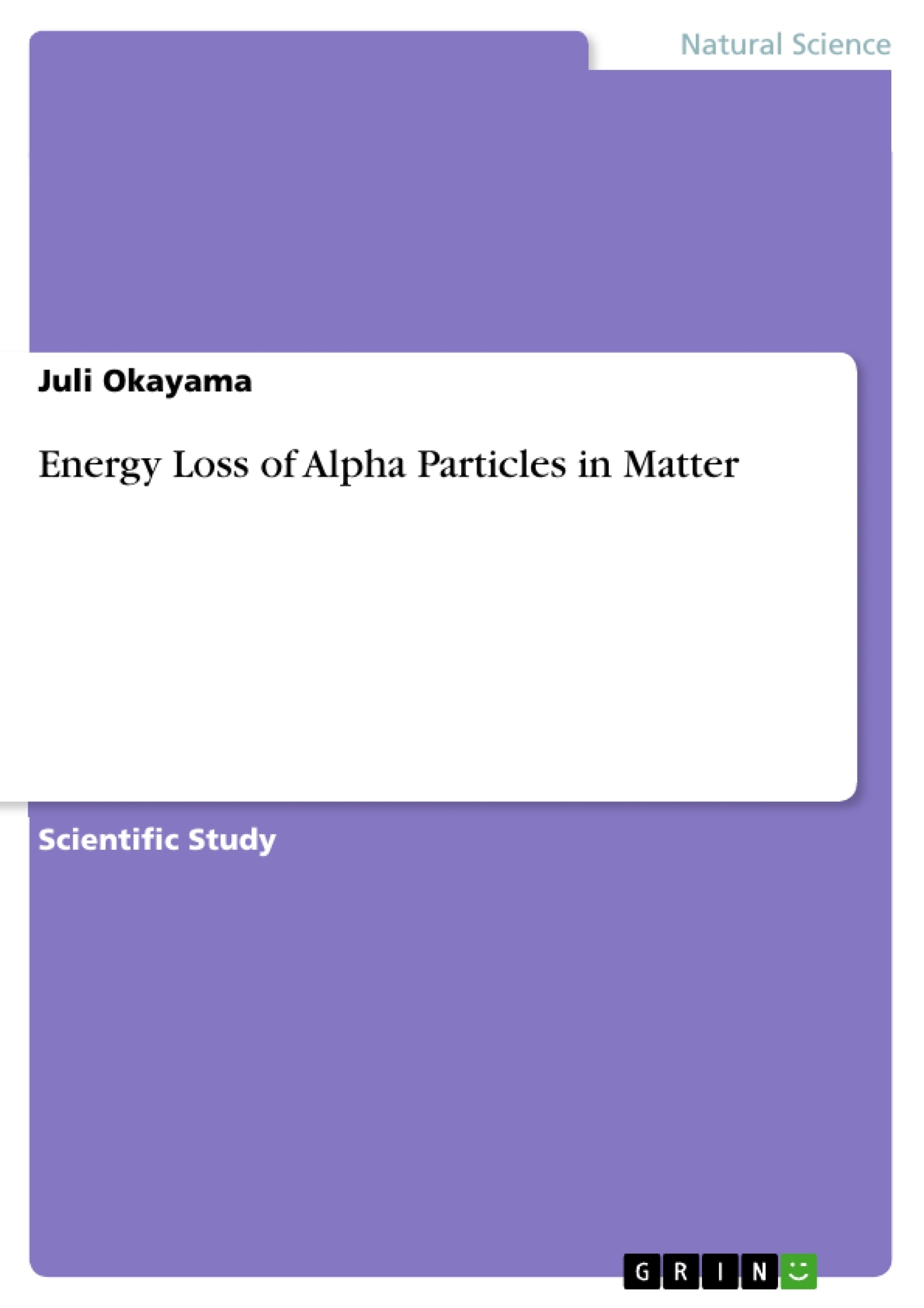Alpha particles, or Helium nuclei, are projected by a radioactive isotope source into a vacuum chamber filled by varying thicknesses of either metallic foils (aluminium, nickel) or gases (helium, nitrogen, argon). A Silicon detector, placed at the opposite end of the chamber, detects the final energies of the alpha particles as they penetrate through the media. It is theorised by the Bethe-Bloch equation that the greater the thickness of the medium in the vacuum chamber, the lower the final energies. Through comparison between the Bethe-Bloch equation and experimental data, the ionisation values for the various elements used can be found. Our preliminary results for one such element, aluminium, demonstrate an ionisation value of I=141.2eV.
Inhaltsverzeichnis (Table of Contents)
- I. INTRODUCTION
- II. THEORY
- III. METHOD
- IV. RESULTS
- Experimental data
- V. CONCLUSION
Zielsetzung und Themenschwerpunkte (Objectives and Key Themes)
This report explores the variations in alpha particle energy as it interacts with different materials, aiming to determine the ionisation energies of various elements. This is achieved by comparing experimental data to theoretical predictions based on the Bethe-Bloch equation. The study provides valuable insights into the interaction of charged particles with matter and its implications in various fields, such as nuclear radiation detectors and radiotherapy.
- Alpha particle energy loss in matter
- Ionisation energies of elements
- Bethe-Bloch equation and its applications
- Experimental methods and data analysis
- Error analysis and limitations
Zusammenfassung der Kapitel (Chapter Summaries)
- I. INTRODUCTION: This chapter introduces the experiment's objectives, focusing on understanding the energy loss of alpha particles as they penetrate various materials. The report delves into the mechanisms of energy loss, including collisions with electrons and ionisation processes. It also highlights the relevance of alpha particle interactions in nuclear radiation detectors and medical applications.
- II. THEORY: This chapter explains the theoretical framework underlying the experiment, presenting the Bethe-Bloch equation. The equation relates the stopping power of alpha particles to their energy and the ionisation energy of the material. The chapter simplifies the equation for the specific energy range of the experiment and outlines the method for calculating theoretical thickness, or range, of the material.
- III. METHOD: This chapter details the experimental setup and procedure. It describes the apparatus used for both metallic foils and gases, focusing on the steps involving bias voltage application, calibration using a pulse generator, and vacuum chamber preparation. The chapter also explains the data acquisition method and the calculation of stopping power and ionisation energy.
- IV. RESULTS: This chapter presents the experimental results, focusing on the analysis of aluminium foil. It discusses the obtained alpha particle energy distribution, the ionisation energy for aluminium, and the comparison of experimental data with theoretical predictions. The chapter also highlights the influence of atomic number on ionisation energy and compares the obtained results with accepted ionisation energy values for various elements.
Schlüsselwörter (Keywords)
The primary keywords and focus topics of this report include alpha particle energy loss, ionisation energy, Bethe-Bloch equation, experimental data analysis, stopping power, and nuclear radiation detectors. The work explores the interaction of alpha particles with matter, providing insights into the determination of ionisation energies for various elements. The study also investigates the relationship between atomic number and ionisation energy.
- Quote paper
- Juli Okayama (Author), 2019, Energy Loss of Alpha Particles in Matter, Munich, GRIN Verlag, https://www.hausarbeiten.de/document/509611


